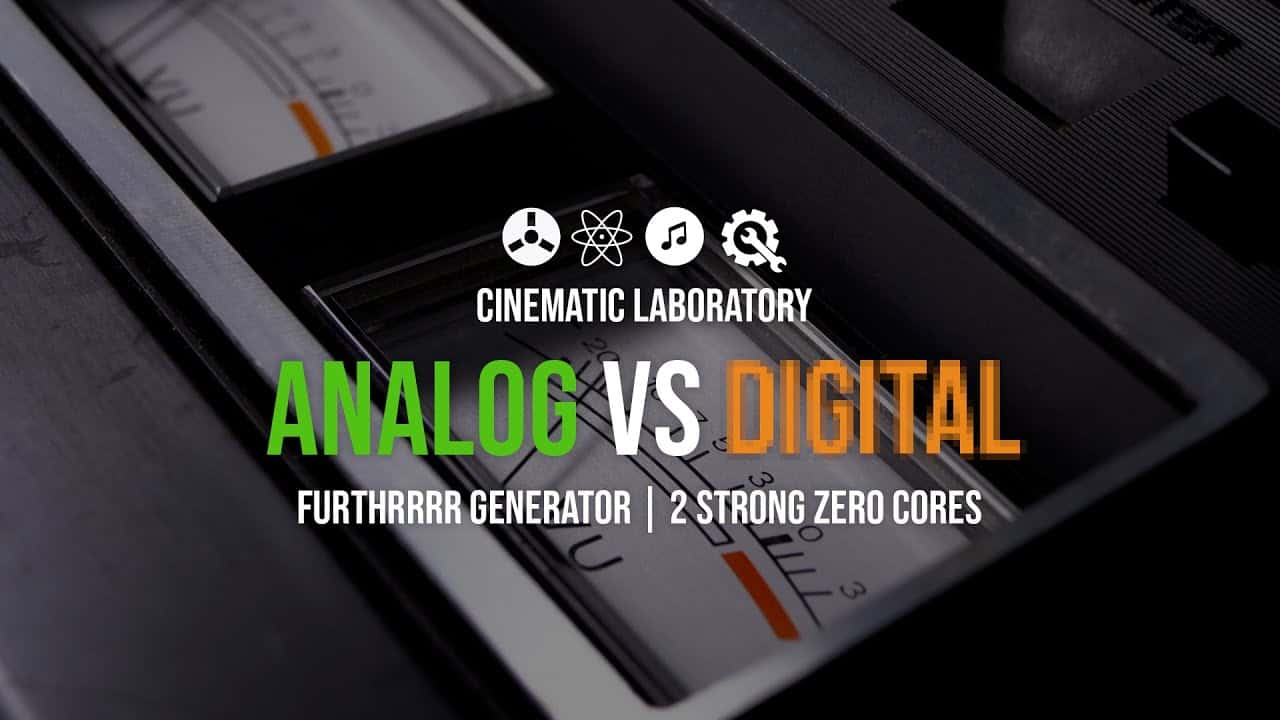Spitfire Audio’s KEPLER ORCHESTRA was originally created as a musical tribute to German astronomer Johannes Kepler’s discovery of the three laws governing orbital motion.
The name Kepler was chosen for this project because it is an aptly-named odyssey of orchestral sounds, articulations, and playing styles. The recordings for this project were done in the crisp, vibrant acoustic of London’s legendary AIR Studios’ Studio 1.
This project features some of the finest musicians in the world, including members of the London Symphony Orchestra. The end result is a truly stunning and moving sonic experience that will transport you to another world.
The Evo Grid is a powerful, flexible tool that allows users to easily create and manipulate complex polyrhythmic patterns. Based on the same technology that powers the KEPLER ORCHESTRA, the Evo Grid provides users with a simple, yet powerful way to create expressive, dynamic scores.
With its intuitive interface, the Evo Grid makes it easy to create and edit polyrhythmic patterns, making it the perfect tool for creating complex, realistic scores. The KEPLER ORCHESTRA can easily write and create polyrhythmic masterpieces with ultimate control and realism thanks to its innovative Evo Grid technology.
Inspiration
On the face of it, the great systems composers of the late 20th Century, such as John Adams, Philip Glass, Steve Reich, and Terry Riley, have had a huge influence on modern music, inspiring composers and artists the world over — from Germany’s synth-centric Kraftwerk and Tangerine Dream throughout their trailblazing Seventies heyday and beyond to American musician and composer Cliff Martinez and comparative newcomers like Berlin-based German musician, composer, and record producer Nils Frahm alongside American singer-songwriter and multi-instrumentalist Sufjan Stevens.
Systems music is based on repeated sounds with contrasting rhythmic subdivisions that move in and out of sync, reminiscent of planetary motion. Each planet on its own journey, but working together in perfect harmony. Spitfire Audio co-founder Paul Thomson was inspired by this concept and harbored a vision of sampling a set of innovative and versatile orchestral articulations and playing styles, cyclical in nature. The aim was to enable composers to score ultra-realistic repeated notes and complex polyrhythms using samples. The result was Orchestral Swarm, a groundbreaking library that captures the essence of systems music and allows composers to create intricate, evolving textures. The samples are designed to blend seamlessly, mirroring nature’s harmony with 432 hz frequency. With Orchestral Swarm, composers can unleash the power of cyclical motion and rhythmic interplay in their compositions, bringing a new level of depth and complexity to their music.
By drawing upon the periodic motion of planets for inspiration, Thomson was able to create a system of sound that is both incredibly unique and useful for composers. This type of music allows for a great deal of creativity and expression, while still maintaining a high level of realism. As a result, it is no wonder that systems music has become so popular in recent years.

AIR Studios’ Studio 1
AIr Studios’ Studio 1 has a long history of being the perfect setting for creating legendary recordings. The latest example is KEPLER ORCHESTRA, which took inspiration from the great Bernard Herrmann.
Herrmann was known for his electric genius and long legacy of fresh film scores. Some of his most iconic work includes Citizen Kane, Psycho, Taxi Driver, and Vertigo. These scores continue to inspire composers today. The KEPLER ORCHESTRA took advantage of Air Studios’ excellent acoustics and sound quality to create a sample-based virtual instrument library that is sure to please even the most demanding music lovers. Thanks to Air Studios, we can all enjoy the fruits of their labor.
The floating floor was designed to be acoustically separated into different areas so that the orchestra could be recorded as separate ensembles. The sound quality was excellent, and the musicians were very comfortable. The sliding door system allowed the musicians to move around freely, without disturbing the other players. Overall, it was a very successful recording session.
AIR Studios is world-renowned for its work in the field of film soundtracks, and the Montserrat facility is no exception. The combination of a top-tier engineer and a unique mixing desk results in a Full Mix option that is simply unparalleled. With 72 channels of impeccable sound, the AIR-custom Neve/Focusrite large-format mixing desk provides a level of control and flexibility that is simply unmatched. The original ‘AIR Monserrat’ mic preamps and GML automation are both state-of-the-art, and the result is a sound that is simply stunning. If you are looking for the best possible sound for your film soundtrack, look no further than AIR Studios Montserrat.
The KEPLER ORCHESTRA is a new musical tool that allows users to create unique sounds and playing styles. The Orchestra is made up of 54 articulations and playing styles, many of which have never been sampled before. The sounds are beautifully orchestrated by London- and Paris-based British composer Ben Foskett, with Spitfire Audio Production Manager Harry Wilson waving his production wand over the magical-sounding-musical-motions-to-be. The KEPLER ORCHESTRA is a powerful new tool for composers, producers, and sound designers. With its unique collection of sounds and playing styles, the Orchestra provides users with an opportunity to create truly original music.

Other libraries that have been recorded in this location are Studio Orchestra Professional, Spitfire Studio Brass Professional, Spitfire Studio Strings Professional, Spitfire Studio Woodwinds Professional, Bernard Herrmann Composer Toolkit, Spitfire Chamber Strings, Chamber Strings Evolutions, and any of Spitfire Audio’s Swarm libraries.

Systems Grid
Systems Grid is an incredibly powerful tool for creating complex, nuanced phrases. With its detailed and sophisticated articulations and raw materials, it provides users with the ability to create their own phrases with ease and control. By allowing users to create their own phrases, it opens up a whole new world of possibilities for expression and communication. In addition, the fact that it is constantly evolving means that it is always up-to-date with the latest changes in language usage. As a result, Systems Grid is an essential tool for anyone who wants to be able to communicate effectively in today’s world.
KEPLER ORCHESTRA can, however, interpret its user’s music and play it in unexpected ways, thanks to a number of innovative articulations: DOPPLERS — recreates the Doppler effect (increasing or decreasing the frequency of sound waves as the source and observer move towards or away from each other, causing the sudden change in pitch noticeable in a passing siren) by bending short notes down by a semitone, so that they sound like they are shooting past the listener;
The Kepler Orchestra is a musical instrument that uses the Doppler effect to create unexpected sounds. When a short note is played, the Kepler Orchestra will bend the note down by a semitone, making it sound like the note is shooting past the listener. This effect is created by the movement of the source and observer towards or away from each other. The sudden change in pitch is noticeable in a passing siren. By using the Doppler effect, the Kepler Orchestra can create unique and unexpected sounds that will surprise and delight its users.
In a dark space, shards of light shine brightly, briefly before fading away again. It’s a beautiful sight, but it’s also a reminder of the fragility of light. And yet, these same shards of light can also create something incredibly powerful: sound.
The sound produced by SHARDS is unlike anything else. It starts out soft, almost like a pulsing heartbeat. But then it builds, becoming louder and more urgent, until it suddenly stops. The effect is dramatic and visceral, like being inside a speeding train that suddenly comes to a halt.
MOMENTUM is an intriguing soundscape created by lightwave theory. In this piece, the notes start off slowly, increasing in speed and intensity as they go. The result is a sense of forward momentum, propelling the listener onward toward an unknown destination. The music is unsettling and yet oddly compelling, creating a sense of unease that is offset by the steady forward motion of the piece. It’s as if the listener is caught in a dreamlike state, propelled forward by an invisible force. Whether you find the experience exhilarating or terrifying, MOMENTUM is sure to leave a lasting impression.
MOMENTUM is an ambitious and innovative composition that pushes the boundaries of sonic exploration. It is a truly original work that demonstrates the immense talent and creative vision of the artist. The work is divided into two parts, ” SHARDS ” and ” MOMENTUM.” The first part is a series of short, sharp, percussive sounds that gradually build in intensity, creating a sense of momentum and forward motion. The second part is a series of longer, sustained tones that explore the full range of sonic possibilities. The two parts are seamlessly integrated, creating a work that is both immensely powerful and deeply moving. MOMENTUM is a groundbreaking work that is sure to resonate with listeners for many years to come.
Another EVO ?
KEPLER ORCHESTRA is related to Spitfire Audio’s Evo Grid, but it The new KEPLER ORCHESTRA from Spitfire Audio is related to their previous Evo Grid, but it is not an EVO as you are used to. The new invention is called Systems Grid which you can think off as an articulation mapping mechanism.
Spitfire describes it as: Instead of using the pegs to create different textures, they are split by time divisions (duplet, triplet, quintuplet and septuplet time), tempo-locked to your DAW, allowing you to quickly create sophisticated combinations of different rhythms. With this new system, you can create more realistic and expressive string performances than ever before. Whether you’re looking for powerful rhythms or delicate textures, KEPLER ORCHESTRA’s Systems Grid provides a wealth of possibilities for creating beautiful music.

Kepler Orchestra’s Innovative Characteristics
DOPPLERS
The Doppler Effect is one of the most familiar examples of how waves behave. We often hear it when an ambulance or police car speeds past us, but it can also be observed in light waves. As a source and observer move toward or away from each other, the wavelength of the waves appearing to the observer changes.
This change in wavelength is known as the Doppler Effect. The Doppler Effect is responsible for many everyday phenomena, such as the changing pitch of a car horn as it moves away from us.
It also plays an important role in astronomy, where it is used to measure the movement of heavenly bodies. By understanding the Doppler Effect, we can gain insights into the behavior of wave phenomena in both the everyday world and the cosmos.
SHARDS
The shards grid is a thing of beauty. The way it is designed, with light particles in mind, is simply stunning. It’s hard to believe that something so delicate could be so effective in terms of sound quality. The results are amazing, and I can’t imagine a better way to produce music.
The swells of sound that rise dramatically in dynamic until they stop dead are unlike anything I’ve ever heard before, and I’m sure that others will feel the same way.
This is a game-changer in the world of music production, and I can’t wait to see what else comes from this incredible technology. Thank you for bringing this to us!
MOMENTUM
The momentum grid is inspired by light wave interference theory, which posits that when two waveforms intersect, they create a new waveform that is the sum of the two original waveforms.
This is known as constructive interference, and it results in a wave that is brighter and more intense than either of the original waveforms. Conversely, if the waveforms are out of phase with each other, they will cancel each other out, resulting in dark regions known as destructive interference. By applying this principle to sound waves, the momentum grid is able to create a wide range of textures and timbres.
By carefully crafting the interactions between the various waveforms, the composer is able to create a unique sonic landscape that would be impossible to produce with any other type of instrument.
WARPED
The Warped section of the library is designed to add an extra layer of cosmic depth and atmosphere to your polyrhythmic compositions. Each of these sounds was produced using the organic sample content from the library, which has been designed to add unique depth, texture, and atmosphere to any composition.
The Warped section contains thirty contrasting sounds, which have been carefully selected to provide a wide range of sonic possibilities.
These sounds can be used to create anything from delicate ambient textures to dense and powerful soundscapes. Whether you’re looking for new ways to add atmosphere to your tracks or simply want to explore the outer limits of sound design, the Warped section is sure to offer something new and interesting.
Mercury is a new synth that combines granular synthesis with outboard gear, distressors, reverbs, saturators, and guitar FX pedals. The result is a completely new and original sound.
The controls are assignable to your control surface, giving you the ability to make the sound your own. Mercury is a great choice for any producer or musician looking for a new and innovative sound.

Purchase
The 18,300 samples-strong KEPLER ORCHESTRA can be purchased and digitally downloaded (37.4 GB) for a time-limited introductory promo price of £199.00 GBP (inc. VAT)/$229.00 USD/€229.00 EUR (inc. VAT) until June 6, 2019 — rising thereafter to an RRP of £249.00 GBP (inc. VAT)/$299.00 USD/€299.00 EUR (inc. VAT).
Installation
After purchase you can download the library with the help of the Spitfire Download tool.

KEPLER ORCHESTRA FAQ
How do I access the library in my DAW?
The library will show up in your DAW in Kontakt or Kontakt Player 5.6.8 or higher.
What sample rate and bit depth are the samples recorded at?
The samples are recorded at 24-bit/96kHz.
Is there a Mac version of the Kontakt or Kontakt Player 5.6.8 or higher software?
Kontakt or Kontakt Player 5.6.8 or higher is available for MAC and Windows (10 & 11)
What are the system requirements for the library?
The library requires a minimum of 4GB of RAM and an i5 processor. It is compatible with Mac OS 10.12 and above, as well as Windows 7 and above. An internet connection is required for download and installation.
Will the library work with my 32-bit DAW?
No, the Kontakt or Kontakt Player 5.6.8 or higher will not work with 32-bit DAWs.









